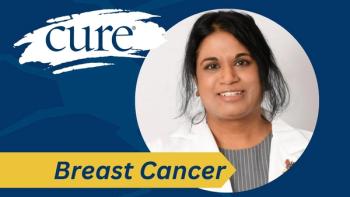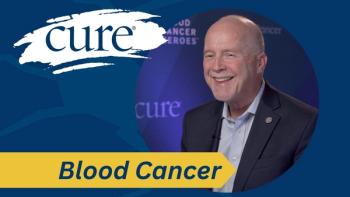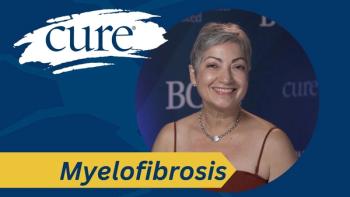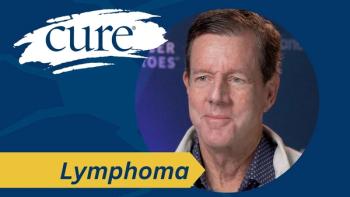
Healing Sounds of Music Therapy
In addition to cancer-fighting treatments, patients can also be healed by music therapy.
Michael M. Richardson walks the hallways of Houston’s MD Anderson Cancer Center in a crisp white lab coat—the same coat worn by dozens of other medical professionals buzzing about the campus. And yet something makes Richardson stand out: He’s the only one with a guitar case strapped to his back.
Richardson is one of the 5,600-plus board certified music therapists in the United States. Many large cancer centers have embraced music therapy as a way to improve patient wellbeing and reduce pain and anxiety—benefits increasingly supported by research. A recent review of 30 studies and nearly 1,900 patients with a cancer diagnosis concluded that music therapy relieves anxiety, improves mood and decreases pain. A session can involve anything from listening to music and writing a song to learning how to play the ukulele.
“Music can be very powerful,” says Kimberly Sena Moore, a certified music therapist and PhD candidate at the University of Missouri-Kansas City. “It can help families cope, and it can help patients cope—emotionally, socially and from a pain and anxiety standpoint as well.”
Just as a counselor will have a different conversation with every patient, no two music therapy sessions are the same. By definition, music therapy is a personalized music intervention by a credentialed music therapist.
“Sometimes our sessions are just music conversations,” says Holly Chartrand, music therapist and co-coordinator for Massachusetts General Hospital’s environmental music program. “Sometimes we do music listening, and it’s really about being in the moment and experiencing music together.”
Chartrand also offers clinical music lessons, either at the bedside or as a welcome distraction when patients are receiving chemotherapy. The hospital even has an instrument-lending program for patients who want to practice. The most popular instrument, she says: the ukulele.
Other common therapy experiences include singing along to music, writing new lyrics to a familiar song, toning and chanting and guided imagery to music. Sessions can last anywhere from 5 to 45 minutes.
Patients and survivors can ask their medical team for information on music therapy and for help finding a therapist. To locate a board-certified music therapist,
A large body of evidence shows that music can improve mood, pain and anxiety in patients. And while working with a music therapist is generally more effective than simply listening to music, just listening to music is still valuable, studies show.
New technology has allowed researchers to observe just how music therapy might work. “When we are engaging in music, even something as simple as listening, brain images and scans show that our brain lights up,” Sena Moore says.
What the scans show: Listening to pleasurable music helps deactivate the amygdala, a brain structure that processes emotional responses. “That’s telling our body, ‘We can calm down now, everything’s OK,’” says Sena Moore. Music also activates the brain’s pleasure and reward system, which may counteract pain.
Some benefits, though, are impossible to quantify. Leah Oswanski, a music therapist with the Jeffrey F. Wacks Music Therapy Program at Morristown Medical Center in New Jersey, recently conducted a survey of their music therapy and performance programs.
“So many people said that it humanized their cancer experience,” she says. “It’s so hard to go through treatment. There are so many tests and so much information that sometimes the human being can get lost in everything that’s going on. Our patients report that music therapy brings back that human side.”
Gale Sulak, 66, was given a diagnosis of lung cancer in December 2011. The cancer had spread, which meant surgery wasn’t an option. Since then, Sulak has continued taking medication and participating in two clinical trials.
Last year, Sulak joined The Celebration Singers, a choir composed of cancer patients, survivors and caregivers led by Richardson at MD Anderson. “I’ve never been one for a support group, but I’ve always loved to sing,” Sulak says.
Before rehearsals, Richardson has everyone introduce themselves, which sometimes gets the group talking with a short get-to-know-you activity. “If you want to talk about your cancer when you introduce yourself you can, but you don’t have to,” Sulak says. “It’s like a support group in disguise.”
“The singing takes me out of myself,” Sulak continues. “It’s hard not to think about your cancer, and it’s hard to talk about it sometimes. That’s what Celebration Singers does for me. When we’re singing I’m totally unaware of being ill, and yet I feel very comfortable chatting with the other singers,” she says.
Of course, everyone copes in different ways—and some, like Bob Mead, cope with humor. Mead, 60, was diagnosed with head and neck cancer a few years ago. Last year, he signed up for Songs from the Heart, a songwriting program for cancer patients through a partnership between Vanderbilt-Ingram Cancer Center in Nashville and the local Gilda’s Club. After two days of workshops, Mead finished his lyrics. The chorus: There’s so many things you don’t expect/When the doctor says “Yup! It’s cancer.”/And when it’s in the head and neck/Amputation ain’t the answer. Mead even brought comical cutting tools, like an oversized pair of scissors and a plastic meat cleaver from Halloween, up on stage when his song was performed at the Songs from the Heart concert. “I can’t get around the fact that I have cancer, so I’m not going to let it bum me out,” he says. “I’m going to make fun of it if I can.”
If you don’t have access to a certified music therapist, you can still harness the benefits of music therapy. A study of 120 breast cancer patients recovering from radical mastectomy found that listening to enjoyable music for 30 minutes twice a day during the time they were in the hospital or receiving chemotherapy significantly reduced pain.
Oswanski recommends making several playlists for different moods. “That way if you have a day where you need a cry, great, now you have your playlist.” Make sure to choose music you like, which research shows is most beneficial.




